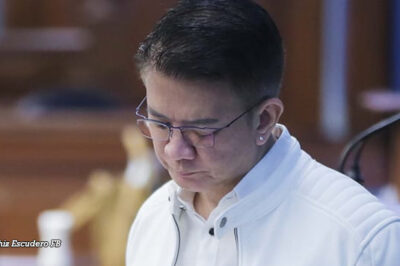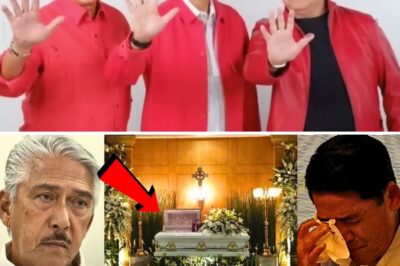
The history of the Philippines, woven from the heroic threads of resistance and steadfast patriotism, also harbors dark and painful chapters. The names etched in the national memory as symbols of sacrifice and courage are revered, but did all of them truly deserve such glory? A recent documentary has stirred the community, digging into lesser-known corners of the past, exposing the stories of figures considered the worst “traitors and turncoats” in Philippine history. These narratives not only challenge traditional notions of heroism but also raise grim questions about human nature when faced with the temptations of power and personal gain.
Felipe Buencamino: The Political “Chameleon”
Topping the list of condemned traitors is Felipe Buencamino, a figure history describes as a political “chameleon” who changed loyalties in the blink of an eye. Initially, Buencamino served the Spanish colonizers faithfully as a judge, even urging the governor to punish those deemed “traitors”—most of whom were his own countrymen—to maintain order. When the Philippine Revolution erupted, he remained on the side of the Spanish. However, upon his capture by revolutionaries in Cavite, he quickly switched sides to join the Filipino cause. He became a member of Emilio Aguinaldo’s cabinet and a co-author of the Malolos Constitution.
But Buencamino’s loyalty lasted only until the Americans arrived. He once again turned his coat, advocating for negotiations with the Americans, a move that enraged General Antonio Luna, who famously slapped him and called him a coward. More chillingly, there are speculations that Buencamino was involved in the assassination of General Luna, a tragic event that occurred just two weeks after their heated confrontation. Buencamino’s shifting allegiances—from Spain to the Philippines, and then to the United States—made him a symbol of political opportunism, an indelible stain on the nation’s history.
Pedro Paterno: The Treacherous Mediator
Pedro Paterno, described by historian Ambeth Ocampo as the “first turncoat,” is no less infamous. An intelligent lawyer and writer, Paterno initially acted as a mediator between Emilio Aguinaldo and the Spanish Governor-General Primo de Rivera. He successfully convinced Aguinaldo to sign the Pact of Biak-na-Bato, forcing the revolutionaries into self-exile in Hong Kong. Immediately after, Paterno demanded a reward from the Spanish, including a seat in their senate and a hefty compensation of one million Mexican pesos, both of which were denied.
When Aguinaldo returned, Paterno once again worked his way into a position of trust, convincing Aguinaldo to appoint him as the President of the Malolos Congress and head of the cabinet. However, when the Philippine-American War broke out, he quickly shifted to support American sovereignty, even participating in the first Philippine Assembly established by the U.S. His death from cholera in 1911 closed the controversial life of a talented intellectual who was willing to sell out his ideals for personal gain.
Cecilio Segismundo: The Fateful Informant
The story of Cecilio Segismundo is a tragedy of personal betrayal. Initially a policeman under the Spanish, Segismundo joined the Katipunan and became a trusted messenger for Emilio Aguinaldo. During the fierce war with the Americans, as Aguinaldo hid in Palanan, Isabela, Segismundo was entrusted with a crucial mission: to deliver a coded letter requesting reinforcements and supplies.
However, Segismundo fell from grace. He not only allowed the coded letter to fall into the hands of Lazaro Segovia, a former Spanish officer who had also served under Aguinaldo, but he also revealed the President’s hiding place and the small number of his troops (only about 50 men). With the help of Segismundo and other Filipino traitors, American forces under General Frederick Funston successfully captured Aguinaldo on March 23, 1901. Although Aguinaldo later claimed Segismundo was coerced, Funston’s officers insisted he had voluntarily provided the information after being well-fed. Segismundo’s actions effectively ended Aguinaldo’s resistance, leaving an unforgettable mark of betrayal.
Apolinario Alquitas: The Assassination of a Young General
Apolinario Alquitas is a name synonymous with the brutal betrayal of Pantaleon Villegas, also known as Leon Kilat, a young and valiant general from Negros Oriental. Tasked by Aguinaldo to lead an uprising in Cebu on April 8, 1898, Leon Kilat demonstrated extraordinary leadership and bravery in the April 3rd revolt, known as the Tres de Abril Uprising. However, when Spanish reinforcements arrived from Manila, the Katipuneros were forced to retreat. Leon Kilat took refuge in the town of Carcar.
Fearing Spanish retaliation, the leaders of Carcar, Florencio Noel and Father Francisco Blanco, conspired with Apolinario Alquitas, a trusted military aide to Leon Kilat. On the night before April 8th, they plied Leon Kilat with alcohol until he was heavily intoxicated. In the early hours of April 8, 1898, while Leon Kilat slept soundly at the home of Capitán Gregorio Vercelina, Alquitas stabbed the young general to death. While accounts vary in detail, all agree that Alquitas was the one who wielded the blade that ended Leon Kilat’s life in a cruel and cowardly act of betrayal.
Teodoro Patiño: The Death Knell for the Katipunan
Teodoro Patiño played a pivotal role in exposing the existence of the Katipunan to the Spanish, leading to the premature outbreak of the revolution. There are several versions of Patiño’s betrayal, but all revolve around a common motive: wages. In one version, Patiño and a Katipunero named Apollonio de la Cruz argued over a two-peso salary increase at a printing press. The fight led to the press being shut down, and when Spanish authorities searched it, they discovered Katipunan documents and materials.
Another version states that Patiño confided in his sister about the dispute with De la Cruz, and she advised him to confess to a priest. The priest then reported the information to the authorities. Regardless of the specifics, the outcome was the same: Patiño’s betrayal exposed the Katipunan, forcing its leaders to launch the revolution earlier than planned, while they were still short on weapons and members.
Antonio Surabao: The Failed Tondo Conspiracy
In the 1580s, a major uprising was planned by prominent leaders and datus from Pampanga, Manila, and other Tagalog regions to fight against Spanish brutality. Led by figures like Magat Salamat, Agustin de Legaspi, and Martin Pangan, the conspiracy even sought support from Japan and Borneo. Magat Salamat stopped in the Calamianes before heading to Borneo, where he tried to recruit Antonio Surabao, a local chieftain.
However, instead of joining, Surabao revealed the entire plan to his master, Pedro Sarmiento, a Spanish encomendero. Sarmiento immediately reported the conspiracy to the Spanish authorities in Manila. As a result, the Filipino leaders were arrested and brutally punished. De Legaspi and Pangan were executed, their bodies publicly displayed as a warning. Magat Salamat was also killed and his property confiscated. Surabao’s actions crushed one of the first major attempts to overthrow Spanish rule.
Lazaro Macapagal: The Executioner of Andres Bonifacio
Lazaro Macapagal, a lieutenant colonel in the Philippine Revolution and an ancestor of two former Philippine presidents, Diosdado Macapagal and Gloria Macapagal Arroyo, is infamous for his role as the commanding officer in the execution of the Supremo Andres Bonifacio and his brother Procopio Bonifacio on May 10, 1897, in Maragondon, Cavite.
According to Macapagal’s own account, General Mariano Noriel ordered him to take the Bonifacio brothers to Tala Hill in Maragondon with a sealed envelope to be opened only upon arrival. The letter contained the death sentence for the two brothers, who were convicted of treason without sufficient evidence. Macapagal recounted how Procopio wept and embraced Andres, while Andres could only shed tears. He claimed to have turned his back so as not to witness the execution. Procopio was killed first, after which Andres, despite being severely wounded, allegedly begged for forgiveness before running into the woods, where he was shot dead. However, many historians doubt Macapagal’s story, especially the detail of Bonifacio running, as he was severely wounded, untreated, and had been deprived of food and water. Macapagal’s role in this tragic event has forever tainted his name.
Januario Galut: The Guide for the Enemy
Januario Galut is the name associated with the betrayal of General Gregorio del Pilar, the “Boy General of the Philippines.” As President Emilio Aguinaldo retreated from Bayambang, he had to cross Tirad Pass. General del Pilar and his 60 soldiers stayed behind to defend the strategic pass, allowing Aguinaldo time to escape.
On December 2, 1899, about 500 American soldiers under Major Peyton March caught up with the Filipino troops. The Americans were pinned down by del Pilar’s forces, and the battle raged for five hours. However, Galut appeared and guided the Americans through secret paths to outflank the Filipino defenders. As a result, only eight Filipino soldiers survived, and General Gregorio del Pilar was killed in action. Galut’s motive for betrayal is unclear, but there is speculation that he felt mistreated by his countrymen. His actions ended the heroic stand at Tirad Pass and cost the life of one of the nation’s youngest generals.
Dominador Gomez: From Patriot to Lure
Dominador Gomez was a complex figure who went from patriot to traitor. Initially a doctor, propagandist, and union leader, he led strikes against American abuses and gave anti-imperialist speeches, which led to his arrest in 1903. However, prison life broke Gomez’s will, and he collaborated with the Americans to capture Macario Sakay, an original Katipunan member and a staunch leader of the resistance against the U.S.
In 1905, the American Governor-General Henry Clay commissioned Gomez to negotiate with Sakay. Gomez convinced Sakay to surrender with promises of independence, self-government, and amnesty for his group, even allowing them to keep their arms. Sakay surrendered in July 1906, but he and his men were immediately arrested and disarmed by the Americans. Before his execution, Sakay bravely declared that he and his followers were not “bandits or thieves” but patriots who fought for the freedom of the Philippines. Gomez’s betrayal led to the death of one of the last freedom fighters of the Philippines.
Miguel Vicos and Pedro Becbec: The Assassination of Diego Silang
Diego Silang was one of the most successful heroes of the anti-Spanish revolts, even becoming the governor of Ilocos Sur. His power grew when he gained the support of British forces. Fearing Silang, the Spanish decided to have him assassinated. This is where Miguel Vicos and Pedro Becbec enter the story.
There are two versions of their motives for betrayal. One claims Vicos held a secret grudge against Silang and was incited by Spanish priests. The other says Becbec was promised a large reward for Silang’s head. What is clear, however, is that they conspired together. In May 1763, Vicos and Becbec visited Silang at his headquarters in Vigan. Trusting them as friends, Silang turned his back, and they shot him without hesitation. The Spanish were so pleased that they erected a statue of a dried dog to symbolize Vicos’s loyalty. Becbec was later captured and executed by Gabriela Silang, Diego’s wife.
Makabayang Katipunan ng mga Pilipino (Makapili): The Symbol of Mass Betrayal
Of all the acts of treachery during the Japanese occupation, the Makapili is the most reviled name. This group, led by former revolutionary General Artemio Ricarte, Pio Duran, and Sakdalista movement founder Benigno Ramos, was formed when the Japanese military recruited Filipinos not to fight, but to spy on their own countrymen.
Whenever the Japanese suspected guerrilla activity or planned uprisings, they would round up villagers and bring out the Makapili members. These traitors wore woven bamboo baskets with two eyeholes to hide their identity as they pointed out suspected guerrillas and their supporters. Countless Filipinos, including innocent people, were tortured and killed by the Japanese because of the Makapili, making them a despicable symbol of betrayal against their own nation.
Benigno Aquino Sr. and Mariano Marcos: A Contested Legacy
The final two names on this list carry controversial legacies and heavy accusations of wartime collaboration. Benigno Aquino Sr., the father of Senator Ninoy Aquino Jr., was a talented politician. During the Japanese occupation in World War II, he became the Director-General of the Kalibapi political party and Vice Chairman of the Preparatory Commission for Philippine Independence. He was also elected Speaker of the National Assembly under the Japanese-sponsored Second Philippine Republic, a government widely seen as a puppet regime. After Japan’s surrender, Aquino Sr. was arrested and charged with treason. While there is no definitive proof of his membership in the Makapili, he is still regarded as a political collaborator with the Japanese.
Mariano Marcos, father of former President Ferdinand Marcos Sr. and grandfather of the current president, Ferdinand Marcos Jr., faces similar accusations. One historical version, based on a book by American guerrilla leader Robert Lapham, claims Mariano Marcos collaborated with the Japanese. According to this account, he was brutally executed by Filipino guerrillas on March 8, 1945. They allegedly tied his hands to two carabaos running in opposite directions, tearing his body apart. The remains were then hung from a tree as a warning to other collaborators. However, the Marcos family has always vehemently denied these claims, insisting he was killed by the Japanese.
These stories of treacherous “heroes” are more than just dark pages in history. They are a reminder that history is not always a simple tale of heroes and villains. They force us to re-examine celebrated names, question the true motives behind great deeds, and recognize that betrayal, however despicable, remains an inseparable part of the human struggle for survival, for power, and for shaping destiny.
News
Ang Lihim sa Likod ng Belo
Ang buhay ko ay parang isang modernong fairytale. Ako si Clara, isang simpleng dalaga na pinalad na umibig at ibigin…
SINO SIYA?! Ang Nakakapanindig-Balahibong Misteryo sa Likod ng Bagong Kapamilya A-Lister Aktres: Ganda, Talento, Karisma, at Isang Malaking Proyekto – Handa na Ba ang ABS-CBN sa Kanyang Pagdating na Yayanig sa Showbiz?
Sa dynamic na mundo ng Philippine entertainment, kung saan ang mga bituin ay sumisikat at lumulubog nang may bilis, mayroong…
ISANG REYNA NG SHOWBIZ, MAGBABALIK NA SA KAPUSO NETWORK? ANG MGA LIHIM NA CLUE AT NAKAKAGULAT NA PAHAYAG NA NAGPAPAHIWATIG SA PINAKAHIHINTAY NA COMEBACK NG ISANG ALAMAT SA TELEBISYON!
Sa dynamic na mundo ng Philippine entertainment, kung saan ang mga bituin ay sumisikat at lumulubog nang may bilis,…
NAKABABALIW NA PAGLALAKBAY SA PUSO NI GERALD ANDERSON: Kilalanin ang 11 Babaeng Nagbigay Kulay, Kilig, at Kontrobersya sa Kanyang Buhay—Mula sa Mga Unang Pag-ibig Hanggang sa mga Huling Hiwalayan na Yumayanig sa Showbiz!
Sa mabilis at punong-punong-intriga na mundo ng Philippine showbiz, kakaunti ang nakakakuha ng parehong antas ng atensyon at diskusyon tulad…
Naku Po! Ang Nakakapanindig-Balahibong P30 Milyong Donasyon na Yumayanig kay Senador Chiz Escudero: Ang Pag-Amin, ang Nawawalang Pondo, at ang Nakakagulat na Paglobo ng Bilyon-Bilyong Kontrata – Ito Ba ang Magpapahaba sa Kanyang Panunungkulan sa Senado o Magiging Dahilan ng Kanyang Pagbagsak?
Sa labis na pinagdedebatehang tanawin ng pulitika sa Pilipinas, kung saan ang mga pangalan ay mabilis na umaangat at…
NAKAKAGULAT NA TSISMIS, YUMANIG SA BUONG BANSA! TVJ, SENTRO NG MGA TEORYA MATAPOS KUMALAT ANG LARAWAN NI VIC SOTTO SA ISANG LAMAY! ANG KATOTOHANAN SA LIKOD NG PAGPANAW NI JOEY DE LEON, INILABAS NA!
Sa loob ng halos limang dekada, ang pangalan ng TVJ—Tito Sotto, Vic Sotto, at Joey de Leon—ay naging kasingkahulugan na…
End of content
No more pages to load












